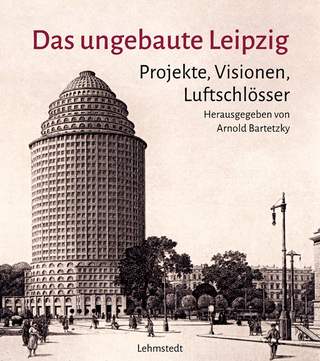
Green Heterogeneous Wireless Networks
Wiley-IEEE Press (Verlag)
978-1-119-08805-9 (ISBN)
- Titel z.Zt. nicht lieferbar
- Versandkostenfrei innerhalb Deutschlands
- Auch auf Rechnung
- Verfügbarkeit in der Filiale vor Ort prüfen
- Artikel merken
The book is novel in that it specifically targets green networking in a heterogeneous wireless medium, which represents the current and future wireless communication medium faced by the existing and next generation communication networks. The book focuses on multi-homing resource allocation, exploiting network cooperation, and integrating different and new network technologies (radio frequency and VLC), expanding the network coverage and integrating new device centric communication paradigms such as D2D Communications. Whilst the book discusses a significant research topic supported with advanced mathematical analysis, the resulting algorithms and solutions are explained and summarized in a way that is easy to follow and grasp. This book is suitable for networking and telecommunications engineers, researchers in industry and academia, as well as students and instructors.
Muhammad Ismail: Postdoctoral Research Associate, Electrical and Computer Engineering Department, Texas A&M University at Qatar, Doha, Qatar. Dr. Ismail’s area of expertise is related to radio resource allocation in a heterogeneous wireless medium. He is a co-recipient of the best paper award at IEEE ICC '14 for a paper related to green resource allocation in a heterogeneous wireless medium: M. Ismail, A. T. Gamage, W. Zhuang, and X. Shen, "Energy efficient uplink resource allocation in a heterogeneous wireless medium," IEEE ICC'14, (to be listed in IEEExplore). Muhammad Zeeshan Shakir: Assistant Research Scientist, Electrical and Computer Engineering Department, Texas A&M University at Qatar, Doha, Qatar. Dr. Shakir's research interests include design and deployment of diverse green wireless communication systems including hyper-dense heterogeneous small-cell networks with particular focus on traffic offloading techniques and backhauling technologies. He has published more than 50 technical journal and conference papers and has contributed to 6 books. Khalid Qaraqe: Professor, Electrical and Computer Engineering Department, Texas A&M University at Qatar, Doha, Qatar. Dr. Qaraqe has over 15 years of experience in the telecommunications industry. He has worked for Qualcomm, Enad Design Systems, Cadence Design Systems/Tality Corporation, STC, SBC and Ericsson. His research interests include communication theory and its application to design and performance analysis of cellular systems and indoor communication systems. Particular interests are in the development of 4G LTE, cognitive radio systems, broadband wireless communications and diversity techniques. Erchin Serpedin: Professor, Electrical and Computer Engineering Department, Texas A&M University, College Station, Texas, USA. Dr. Serpedin is the author of two research monographs, one edited textbook, 100 journal papers and 180 conference papers, and has served as associate editor for approximately 12 journals including IEEE Transactions on Information Theory, IEEE Signal Processing Magazine, IEEE Transactions on Communications, and IEEE Communications Letters. His research interests include signal processing, wireless communications, computational statistics, and bioinformatics and systems biology. He is currently serving as editor in chief of the Eurasip Journal on Bioinformatics and Systems Biology, an online journal edited by Springer. He is also an IEEE Fellow.
Preface xi
Acknowledgements xiii
Dedication xv
Part I INTRODUCTION TO GREEN NETWORKS
1 Green Network Fundamentals 3
1.1 Introduction: Need for Green Networks 3
1.2 Traffic Models 5
1.2.1 Traffic Spatial Fluctuation Modelling 6
1.2.2 Traffic Temporal Fluctuation Modelling 8
1.3 Energy Efficiency and Consumption Models in Wireless Networks 9
1.3.1 Throughput Models 9
1.3.2 Power Consumption Models 10
1.3.3 Energy Efficiency and Consumption Models 19
1.4 Performance Trade-Offs 23
1.4.1 Network-side Trade-Offs 24
1.4.2 Mobile User Trade-Offs 26
1.5 Summary 28
2 Green Network Solutions 29
2.1 Green Solutions and Analytical Models at Low and/or Bursty Call Traffic Loads 29
2.1.1 Dynamic Planning 29
2.1.2 MT Radio Interface Sleep Scheduling 34
2.1.3 Discussion 37
2.2 Green Solutions and Analytical Models at High and/or Continuous Call Traffic Loads 38
2.2.1 Scheduling for Single-Network Access 38
2.2.2 Scheduling for Multi-Homing Access 41
2.2.3 Scheduling with Small-Cells 41
2.2.4 Relaying and Device-to-Device Communications 42
2.2.5 Scheduling with Multiple Energy Sources 45
2.2.6 Discussion 47
2.3 Green Projects and Standards 48
2.4 Road Ahead 49
2.5 Summary 52
Part II MULTI-HOMING RESOURCE ALLOCATION
3 Green Multi-homing Approach 55
3.1 Heterogeneous Wireless Medium 55
3.1.1 Wireless Networks 56
3.1.2 Mobile Terminals 57
3.1.3 Radio Resources and Propagation Attenuation 57
3.2 Green Multi-homing Resource Allocation 58
3.3 Challenging Issues 60
3.3.1 Single-User versus Multiuser System 60
3.3.2 Single-Operator versus Multioperator System 60
3.3.3 Fairness 61
3.3.4 Centralized versus Decentralized Implementation 61
3.3.5 In-device Coexistence Interference 62
3.3.6 Computational Complexity 66
3.3.7 Number of MT Radio Interfaces versus Number of Available Networks 67
3.4 Summary 69
4 Multi-homing for a Green Downlink 70
4.1 Introduction 70
4.2 Win–Win Cooperative Green Resource Allocation 72
4.2.1 Non-cooperative Single-Network Solution 73
4.2.2 Win–Win Cooperative Solution 75
4.2.3 Benchmark: Sum Minimization Solution 81
4.2.4 Performance Evaluation 81
4.3 IDC Interference-Aware Green Resource Allocation 86
4.3.1 IDC Interference-Aware Resource Allocation Design 87
4.3.2 Performance Evaluation 90
4.4 Summary 93
5 Multi-homing for a Green Uplink 94
5.1 Introduction 94
5.2 Green Multi-homing Uplink Resource Allocation for Data Calls 95
5.2.1 Optimal Green Uplink Radio Resource Allocation with QoS Guarantee 97
5.2.2 Suboptimal Uplink Energy-Efficient Radio Resource Allocation 102
5.2.3 Performance Evaluation 104
5.3 Green Multi-homing Uplink Resource Allocation for Video Calls 107
5.3.1 Energy Management Sub-system Design 109
5.3.2 Performance Evaluation 114
5.4 Summary 117
6 Radio Frequency and Visible Light Communication Internetworking 119
6.1 Introduction 119
6.2 VLC Fundamentals 120
6.2.1 VLC Transceivers 120
6.2.2 VLC Channel 122
6.2.3 Interference Issues in VLC 124
6.2.4 VLC–RF Internetworking 126
6.3 Green RF–VLC Internetworking 128
6.3.1 Energy Efficiency Maximization 129
6.3.2 Performance Evaluation 133
6.3.3 Green VLC–RF Internetworking Challenging Issues 137
6.4 Summary 138
Part III NETWORK MANAGEMENT SOLUTIONS
7 Dynamic Planning in Green Networks 141
7.1 Introduction 141
7.2 Dynamic Planning with Dense Small-Cell Deployment 142
7.2.1 Energy-Efficient and QoS-Aware Cell Zooming 144
7.2.2 Performance Evaluation 145
7.3 Dynamic Planning with Cooperative Networking 148
7.3.1 Optimal Resource On–Off Switching Framework 150
7.3.2 Performance Evaluation 152
7.4 Balanced Dynamic Planning Approach 154
7.4.1 Two-Timescale Approach 157
7.4.2 Performance Evaluation 162
7.5 Summary 164
8 Greening the Cell Edges 166
8.1 Introduction 166
8.1.1 Why Cell-on-Edge Deployment? 167
8.1.2 Background Work 168
8.2 Two-Tier Small-Cell-on-Edge Deployment 169
8.2.1 Network Layout 169
8.2.2 Bandwidth Partition and Channel Allocation 170
8.2.3 Mobile User Distribution 171
8.3 Energy-Aware Transmission Design 171
8.3.1 Path-Loss Model for Strong LOS Conditions 171
8.3.2 Composite Fading Channel for Strong LOS Conditions 172
8.4 Area Spectral Efficiency of HetNets 173
8.5 Analytical Bounds on ASE of HetNets 176
8.5.1 Mean Achievable Capacity Based on MGF Approach 176
8.5.2 Assumptions to Derive Upper and Lower Bounds 177
8.5.3 Analytical Bounds on the Capacity of Macro-cell Network 179
8.5.4 Analytical Bounds on the Capacity of Small-Cell Networks 180
8.6 Analytical Bounds on ASE over Generalized-K Fading Channel 181
8.7 Energy Analysis of HetNets 183
8.7.1 Energy Consumption of Two-Tier HetNets 184
8.7.2 Energy Savings of Two-Tier HetNets 184
8.8 Ecology and Economics of HetNets 185
8.8.1 CO2e Emissions and Reduction in CO2e Emissions 186
8.8.2 Daily CO2e Emissions Profile 186
8.8.3 Low-Carbon Economy 186
8.9 Summary 188
Appendix A - Simulation Parameters 189
Appendix B - Proof of (8.38) 189
9 D2D Communications in Hierarchical HetNets 191
9.1 Introduction 191
9.2 Modelling Hierarchical Heterogeneous Networks 192
9.2.1 Network Architecture 193
9.2.2 D2D User Density in Hierarchical HetNets 194
9.2.3 Spectrum Partitioning in Hierarchical HetNets 196
9.2.4 Power Control over D2D Links 196
9.3 Spectral Efficiency Analysis 197
9.3.1 Traditional HetNet 197
9.3.2 Hierarchical HetNet 198
9.4 Average User Transmission Power Analysis 200
9.4.1 Discussion on Transmission Power Analysis of D2D Users 202
9.5 Backhaul Energy Analysis 204
9.5.1 Backhaul Power Consumption 204
9.5.2 Backhaul Energy Efficiency 205
9.5.3 Considerations on Backhaul Energy Efficiency of Hierarchical HetNet 206
9.6 Summary 208
Appendix A 209
Appendix B - Simulation Parameters 210
10 Emerging Device-Centric Communications 211
10.1 Introduction 211
10.2 Emerging Device-Centric Paradigms 212
10.2.1 Device-to-Device Communication Management 213
10.2.2 Device-to-Device Communication Architecture 213
10.2.3 Device-to-Device Communication Challenges 214
10.3 Devices-to-Device Communications 214
10.3.1 System Model 214
10.4 Optimal Selection of Source Devices and Radio Interfaces 216
10.4.1 Device Selection Criteria 217
10.4.2 Ascending Proxy Auction for Device Selection 218
10.4.3 Discussions on Device and Radio Interface Selection 219
10.5 Optimal Packet Split among Devices 221
10.6 Green Analysis of Mobile Devices 224
10.6.1 Energy Consumption of Mobile Devices 225
10.6.2 Electricity Cost for Mobile Charging 226
10.6.3 Battery Life of Mobile Devices 227
10.7 Some Challenges and Future Directions 228
10.7.1 Centralized Ds2D Set-up 228
10.7.2 Decentralized Ds2D Set-up 228
10.8 Summary 229
References 230
Index 245
| Erscheinungsdatum | 25.10.2016 |
|---|---|
| Reihe/Serie | IEEE Press |
| Sprache | englisch |
| Maße | 168 x 246 mm |
| Gewicht | 567 g |
| Themenwelt | Geisteswissenschaften ► Geschichte |
| Technik ► Elektrotechnik / Energietechnik | |
| Technik ► Nachrichtentechnik | |
| ISBN-10 | 1-119-08805-4 / 1119088054 |
| ISBN-13 | 978-1-119-08805-9 / 9781119088059 |
| Zustand | Neuware |
| Informationen gemäß Produktsicherheitsverordnung (GPSR) | |
| Haben Sie eine Frage zum Produkt? |
aus dem Bereich


